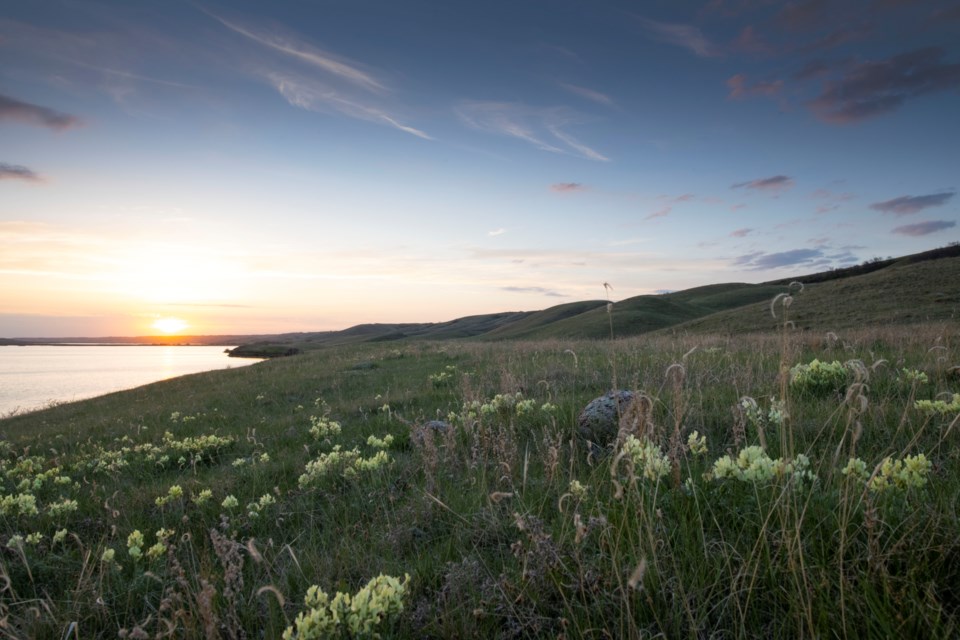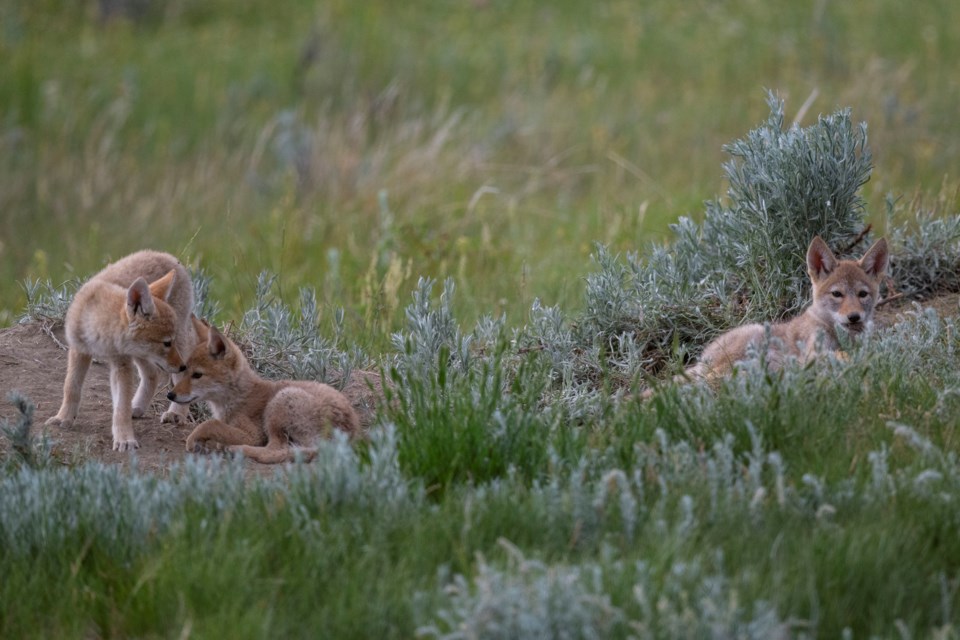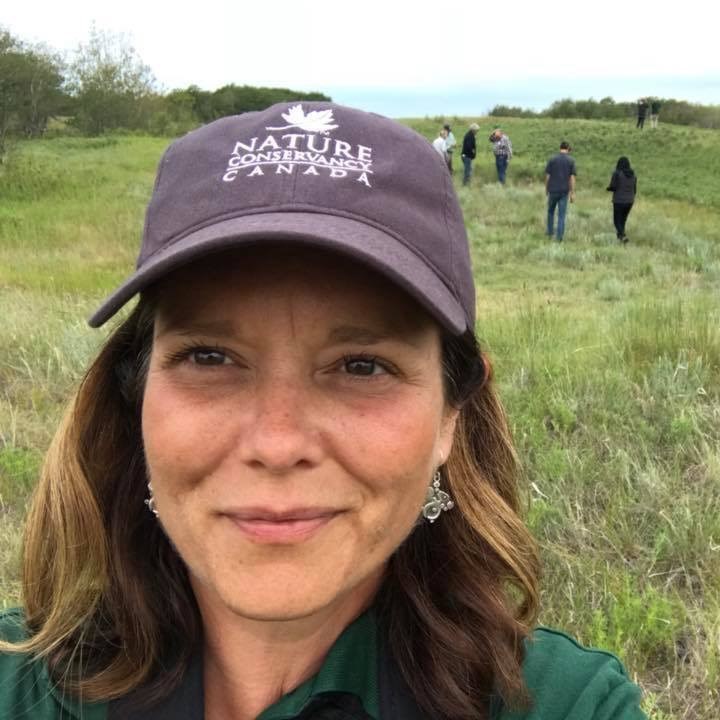In looking back over the past year, the Nature Conservancy of Canada is very pleased with the work it has done to conserve and protect endangered ecosystems, including those in Saskatchewan.
Regional vice-president for Saskatchewan Jennifer McKillop took a moment with the Moose Jaw Express to look back on 2020 and the important projects she and her team were able to complete in the midst of the pandemic.
“It's in times like these, people really focus on things that are really important and I know for myself, one of those things is nature,” said McKillop. “And we saw a real uptick in people spending time outside this year, which has been really interesting.”
In August, the NCC dedicated 866 hectares of grasslands north of Buffalo Pound Lake, including seven kilometres of shoreline, as a new conservation site. The area is home to several animals on Canada’s Species At Risk Act, including Sprague's pipit, the bobolink, Baird’s sparrow, the northern leopard frog and the American badger.
The Buffalo Pound area also serves to filter drinking water for an estimated one-third of the province and was previously at risk of industry development.
 The Nature Conservancy of Canada's conservation property north of Buffalo Pound Lake. (photo by Jason Bantle)
The Nature Conservancy of Canada's conservation property north of Buffalo Pound Lake. (photo by Jason Bantle)In October, the NCC expanded its conservation site north of Saskatoon to include 124 hectares of land near Asquith, Sask, which features both native grasslands as well as aspen forest. The site is nearby three other NCC conservation sites, which now totals 543 hectares of land contributing to a habitat corridor in the Saskatoon Prairie Natural Area.
The area serves to benefit man migratory birds and is home to several species at risk, including the American badger, the bobolink, bank swallow and northern leopard frog.
In partnership with the Saskatoon Nature Society, the NCC is planning to mark interpretive trails with signage through the area, to educate interested visitors on the site and it’s relevance to habitat conservation in the face of urbanization.
 The Nature Conservancy of Canada's conservation property near Asquith, Sask. (photo supplied / Jason Bantle)
The Nature Conservancy of Canada's conservation property near Asquith, Sask. (photo supplied / Jason Bantle)In November, the NCC was also able to dedicate another 195 hectares near Consul, Sask. as a conservation site. The area, referred to as Zen-Ridge, is part of the Milk River Basin area and includes both grasslands and seasonal wetlands habitats.
It is home to several species at risk, including greater sage-grouse, the chestnut-collared longspur, ferruginous hawk and the rare dwarf woolly-heads plant, which grows on the dried-up edges of the wetlands.
 Coyote pups, photographed at the Zen-Ridge conservation site near Consul, Sask. (photo supplied / Jason Bantle)
Coyote pups, photographed at the Zen-Ridge conservation site near Consul, Sask. (photo supplied / Jason Bantle)For McKillop and the rest of the NCC, the preservation of each of these properties is an enormous victory for the preservation of one of the most endangered ecosystems in the world: the grasslands.
“Usually when people this about in-danger ecosystems, they don’t think about prairie but it really is one of the rarest in the world. There is only about 17 per cent of native grasslands left in Saskatchewan,” said McKillop. “So it’s important to preserve it, not just for its intrinsic value but also for the ecological service it provides, like helping mitigate flooding as well as drought.”
The projects completed by the NCC in Saskatchewan were largely made possible thanks to support from donors, said McKillop, including a fundraising campaign held earlier this year that helped make the Buffalo Pound property acquisition possible.
“Over that three-month campaign, we received almost 300 donations, and about half of those were from new donors to the NCC,” said McKillop. “And that was really exciting for us because not only is it an important project from a conservation point of view, but it showed us that even in these really challenging times, that nature is really important to people in Saskatchewan.”
McKillop also praised her dedicated team of staff at the Saskatchewan branch, as well as across the NCC as a whole for the work they have accomplished this year.
“It's very rewarding work and we have a small but passionate team that works in the province and across Canada,” said McKillop. “We’ve all been challenged, working through the pandemic, but people have adapted and we’ve made some real gains.”
The NCC was also recently named one of the top workplaces in Canada managed by a woman, an accolade McKillop was proud to see bestowed.
Looking ahead to 2021, McKillop promised that the Saskatchewan branch of the NCC has plans to continue acquiring land with high conservation value, as well as to fill positions on a regional board of directors.
The organization will also be focusing on building partnerships with other groups who hold an interest in the protected properties, like local Indigenous communities and ranchers or cattlemen to support good stewardship on their land.
Mostly, said McKillop, everyone at the Saskatchewan branch is looking forward to getting back outdoors again to host workshops and property tours, after taking much of their programming to an online space this year.
“We’re just looking forward to getting outside, spending time with supporters and the public and telling our story,” said McKillop. “We’ve had a great year engaging with people virtually, but there’s nothing like spending time outside, enjoying nature and really seeing the results of the work that we do — we call those ‘the results you can walk on.’”
For more information about the NCC, its programs and conservation sites, visit natureconservancy.ca.




